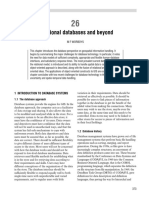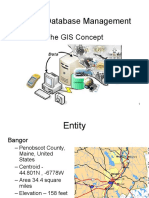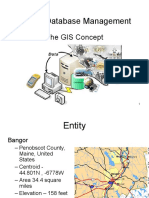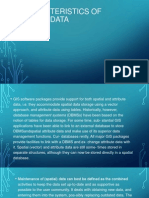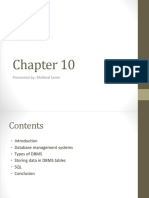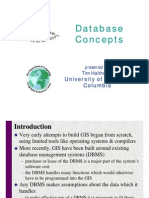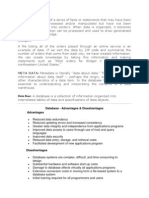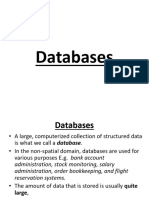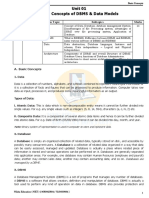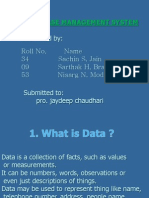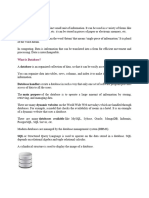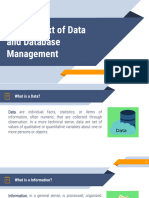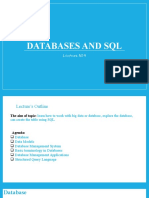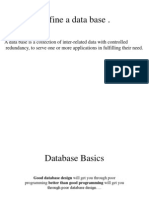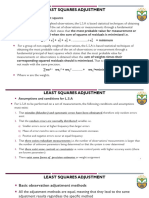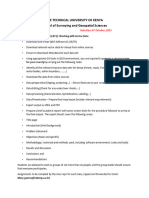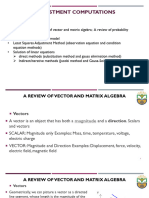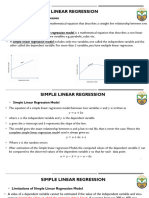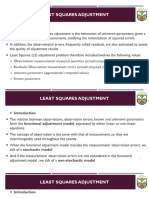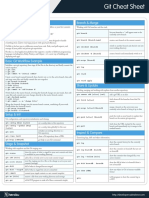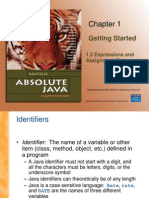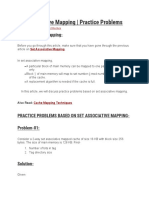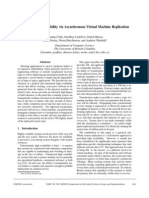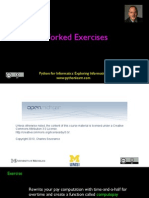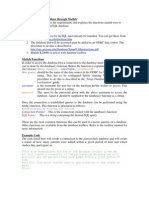0% found this document useful (0 votes)
45 views44 pagesGISA Data Storage and Management Lecture5 Edited13102023
This document discusses data storage and management in GIS, which organizes both spatial and attribute data for quick retrieval. It focuses on database concepts, including the functions and advantages of databases for GIS data. Different database models are described, such as hierarchical, network, and relational models. Relational databases are most common for GIS today and organize data into tables that can be linked through primary and foreign keys.
Uploaded by
Jecinta wCopyright
© © All Rights Reserved
We take content rights seriously. If you suspect this is your content, claim it here.
Available Formats
Download as PDF, TXT or read online on Scribd
0% found this document useful (0 votes)
45 views44 pagesGISA Data Storage and Management Lecture5 Edited13102023
This document discusses data storage and management in GIS, which organizes both spatial and attribute data for quick retrieval. It focuses on database concepts, including the functions and advantages of databases for GIS data. Different database models are described, such as hierarchical, network, and relational models. Relational databases are most common for GIS today and organize data into tables that can be linked through primary and foreign keys.
Uploaded by
Jecinta wCopyright
© © All Rights Reserved
We take content rights seriously. If you suspect this is your content, claim it here.
Available Formats
Download as PDF, TXT or read online on Scribd
/ 44


